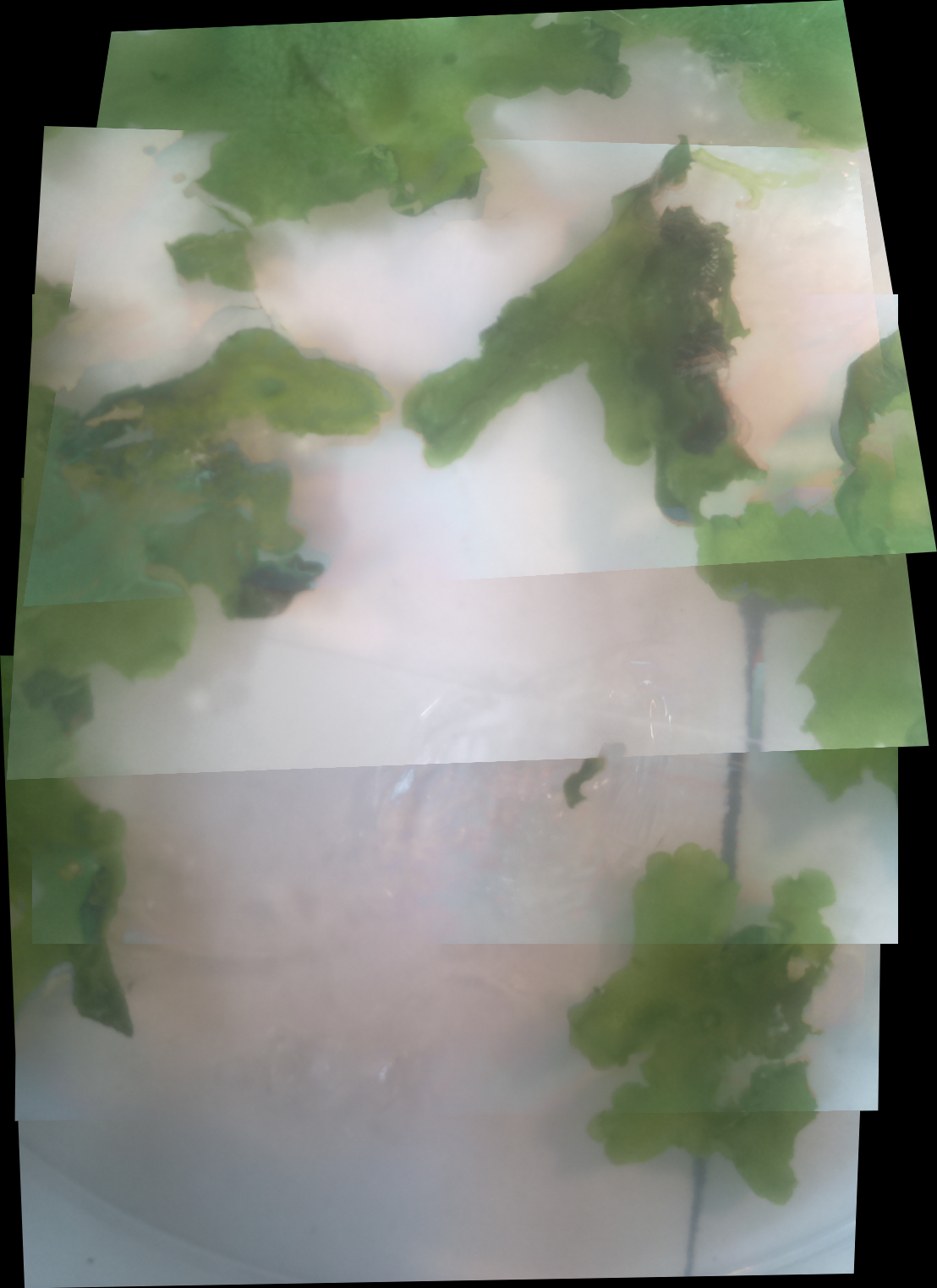Difference between revisions of "Team:Cambridge-JIC/MicroMaps"
Maoenglish (Talk | contribs) |
|||
| Line 83: | Line 83: | ||
<p><b>How it works:</b> More concretely, MicroMaps keeps a collection of images it has taken along with the corresponding expected physical coordinates. MicroMaps will request small regions (tiles) of the slide one-by-one to fill up its field of view. When a tile is requested the software will look through its collection to see if it has already captured that region, and will join any seams it finds if multiple images match that tile. If no images match that tile, it will take a series of overlapping images between a nearby (in terms of expected coordinates) image and the desired tile. For each image, it will use the stitching algorithm to determine accurate coordinates representing the image and compare them to the expected coordinates. This is essential to correct for hardware noise and inaccuracies, and will allow a seamless image to be constructed from these small tiles. The accuracy obtained, combined with calibration data, will then allow for precise measurements to be made. The accurate positioning information will also allow pins to be dropped so interesting features can be returned to later.</p> | <p><b>How it works:</b> More concretely, MicroMaps keeps a collection of images it has taken along with the corresponding expected physical coordinates. MicroMaps will request small regions (tiles) of the slide one-by-one to fill up its field of view. When a tile is requested the software will look through its collection to see if it has already captured that region, and will join any seams it finds if multiple images match that tile. If no images match that tile, it will take a series of overlapping images between a nearby (in terms of expected coordinates) image and the desired tile. For each image, it will use the stitching algorithm to determine accurate coordinates representing the image and compare them to the expected coordinates. This is essential to correct for hardware noise and inaccuracies, and will allow a seamless image to be constructed from these small tiles. The accuracy obtained, combined with calibration data, will then allow for precise measurements to be made. The accurate positioning information will also allow pins to be dropped so interesting features can be returned to later.</p> | ||
| − | <p><b>Problems:</b> This works well for fixed samples, but what about live samples? With the current difficulties, we are not prepared to apply MicroMaps logic to motile samples. Moving samples are infeasible with current processing delays. For now, we recommend using the <a href="//2015.igem.org/Team:Cambridge-JIC/Webshell" class="blue">WebShell</a>. We are still working on this issue, expect the | + | <p><b>Problems:</b> This works well for fixed samples, but what about live samples? With the current difficulties, we are not prepared to apply MicroMaps logic to motile samples. Moving samples are infeasible with current processing delays. For now, we recommend using the <a href="//2015.igem.org/Team:Cambridge-JIC/Webshell" class="blue">WebShell</a>. We are still working on this issue, expect the ability to follow moving specimens in WebShell v2, and perhaps in MicroMaps v2 with some speed improvements.</p> |
<br> | <br> | ||
<hr> | <hr> | ||
Revision as of 16:35, 18 September 2015














